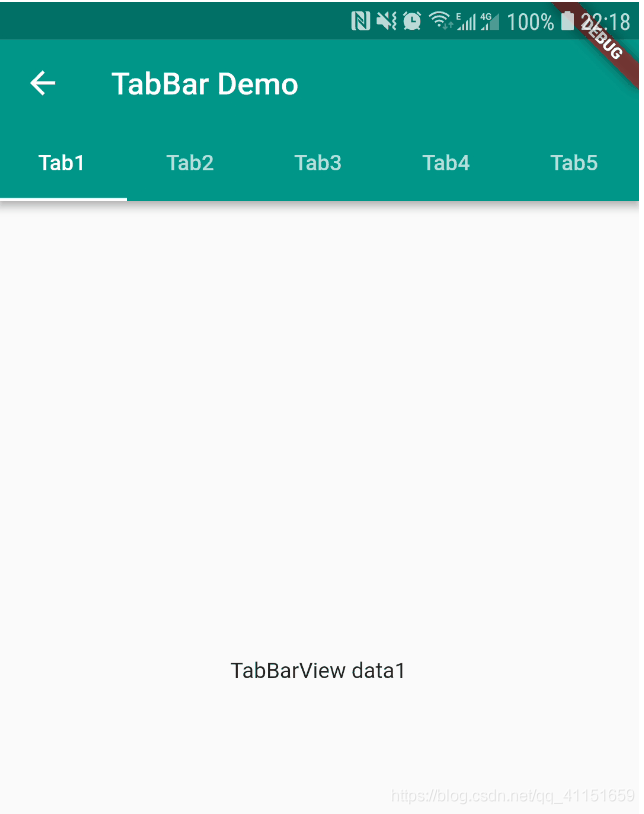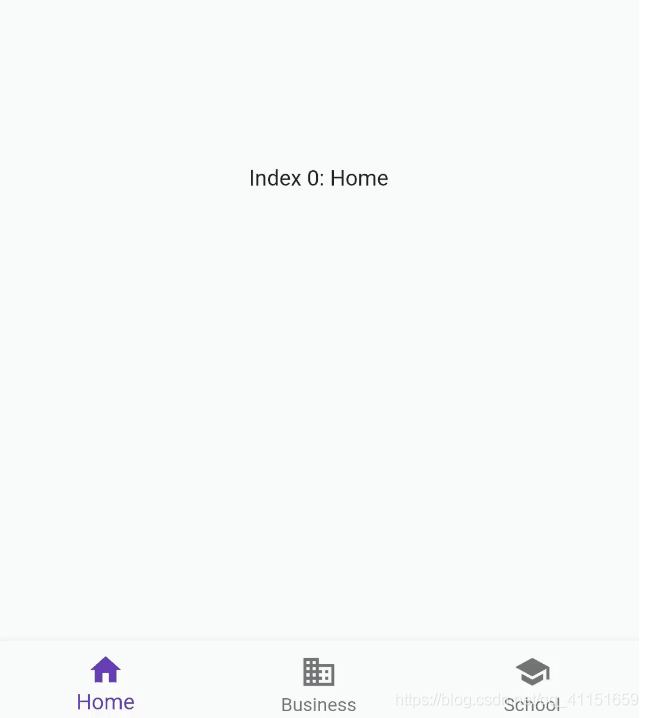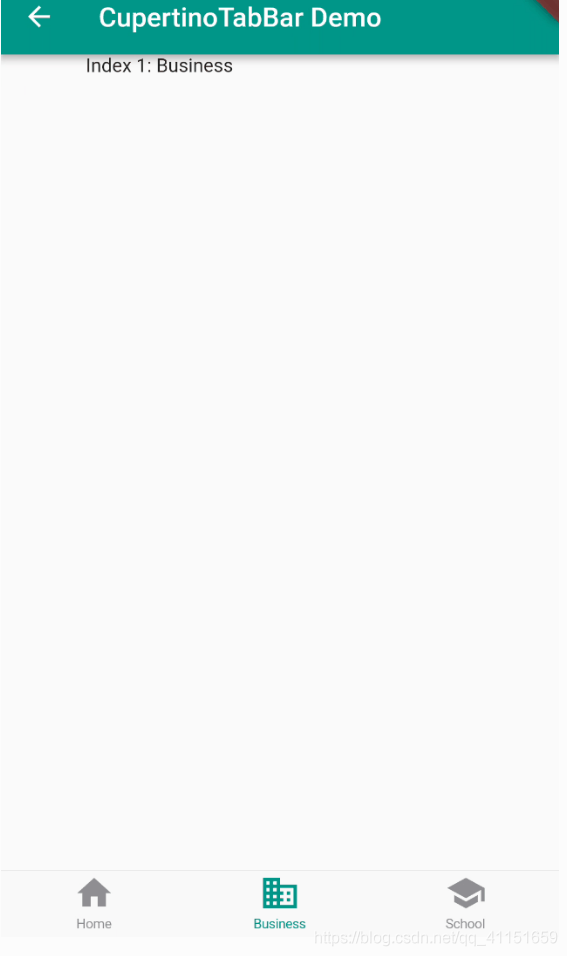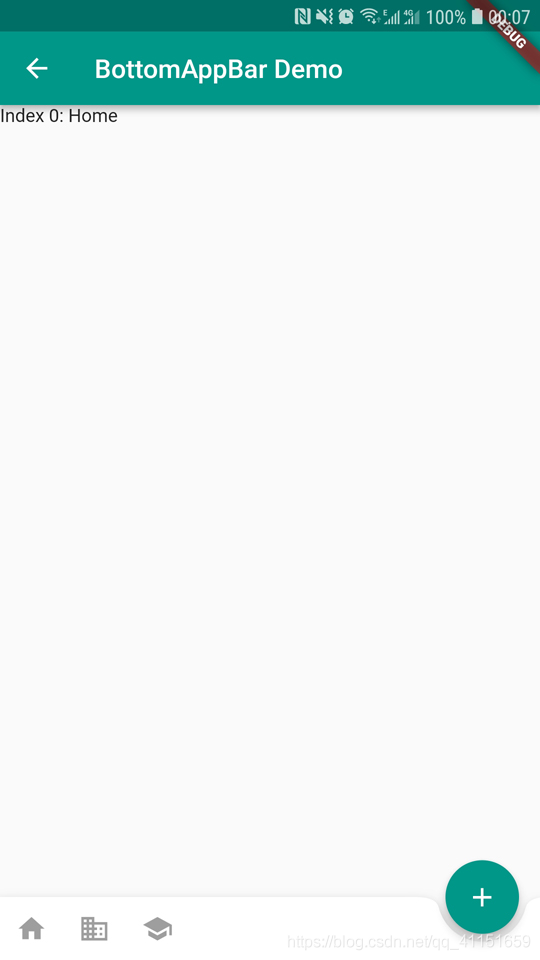文章目录
1.TabBar和TabBarView Widget
TabBar 和 TabBarView 一般是搭配使用,TabBar 用来实现 Tab 导航部分,TabBarView 用来实现 body 内容区域部分。TabBar 继承自 StatefulWidget,是一个有状态组件。TabBarView 同样也是继承自 StatefulWidget。
来看下 TabBar 的构造方法:
const TabBar({
Key key,
// tab页Widget集合,可以使用Tab组件或者其他组件
@required this.tabs,
// TabController对象,控制tab页
this.controller,
// 是否可滚动
this.isScrollable = false,
// 指示器颜色
this.indicatorColor,
// 指示器高度
this.indicatorWeight = 2.0,
// 底部指示器的Padding
this.indicatorPadding = EdgeInsets.zero,
// 指示器装饰器decoration,例如加边框
this.indicator,
// 指示器大小计算方式,TabBarIndicatorSize.label跟文字等宽,TabBarIndicatorSize.tab跟每个tab等宽
this.indicatorSize,
// 选中Tab文字颜色
this.labelColor,
// 选中Tab文字Style
this.labelStyle,
// 每个label的padding值
this.labelPadding,
// 未选中label颜色
this.unselectedLabelColor,
// 未选中label的Style
this.unselectedLabelStyle,
this.dragStartBehavior = DragStartBehavior.down,
// 点击事件
this.onTap,
})
再看下 TabBarVeiw 构造方法:
const TabBarView({
Key key,
// tab内容页列表,和TabBar的tab数量一样
@required this.children,
// TabController对象,控制tab页
this.controller,
this.physics,
this.dragStartBehavior = DragStartBehavior.down,
})
我们看一个 TabBar 和 TabBarView 结合的实例:
// TabBar和TabBarView最简单的用法
class TabBarSamplesState extends State<TabBarSamples>
with SingleTickerProviderStateMixin {
TabController _tabController;
@override
void initState() {
super.initState();
//initialIndex为初始选中第几个,length为数量
_tabController = TabController(initialIndex: 0, length: 5, vsync: this);
// 监听
_tabController.addListener(() {
switch (_tabController.index) {
case 0:
break;
case 1:
break;
}
});
}
@override
Widget build(BuildContext context) {
return Scaffold(
appBar: AppBar(
title: Text('TabBar Demo'),
primary: true,
// 设置TabBar
bottom: TabBar(
controller: _tabController,
tabs: <Widget>[
Tab(
text: "Tab1",
),
Tab(
text: "Tab2",
),
Tab(
text: "Tab3",
),
Tab(
text: "Tab4",
),
Tab(
text: "Tab5",
),
],
),
),
// body用TabBarView
body: TabBarView(
controller: _tabController,
children: <Widget>[
Center(
child: Text("TabBarView data1"),
),
Center(
child: Text("TabBarView data2"),
),
Center(
child: Text("TabBarView data3"),
),
Center(
child: Text("TabBarView data4"),
),
Center(
child: Text("TabBarView data5"),
),
],
),
);
}
@override
void dispose() {
super.dispose();
_tabController.dispose();
}
}
运行效果如图:

当然把 TabBar 放在底部也可以,不过一般放在顶部,放在底部的导航效果用另外一种组件,我们接下来将会学到。
如果想放在底部可以这样设置:
// 最外层是Scaffold布局
bottomNavigationBar: Material(
color: Colors.blue,
child: TabBar(
controller: _controller,
tabs: <Tab>[
Tab(text: "Home", icon: Icon(Icons.home)),
Tab(text: "Apps", icon: Icon(Icons.list)),
Tab(text: "Center", icon: Icon(Icons.message)),
],
indicatorWeight: 0.1,
),
),
2.BottomNavigationBar Widget
BottomNavigationBar 一般用来实现底部导航效果,和 Android 原生效果基本一样。
BottomNavigationBar 继承自 StatefulWidget,一般搭配 BottomNavigationBarItem 进行使用。
我们看下 BottomNavigationBar 实现的效果:

BottomNavigationBar 实现的导航有一个特点就是选中项会稍微有一个放大的动画,这是和其他组件实现的导航效果的一个小差别。
BottomNavigationBar 的构造方法:
BottomNavigationBar({
Key key,
// BottomNavigationBarItem集合
@required this.items,
this.onTap,
// 当前选中位置
this.currentIndex = 0,
// 设置显示的模式
BottomNavigationBarType type,
// 主题色
this.fixedColor,
// 图标尺寸
this.iconSize = 24.0,
})
BottomNavigationBarItem 的构造方法:
const BottomNavigationBarItem({
// 图标
@required this.icon,
// 文字
this.title,
// 选中图标
Widget activeIcon,
// 背景色
this.backgroundColor,
})
接下来我们通过代码来实现上面的 BottomNavigationBar 的效果:
class NavigationBarState extends State<NavigationBarSamples> {
// 默认选中第一项
int _selectedIndex = 0;
final _widgetOptions = [
Text('Index 0: Home'),
Text('Index 1: Business'),
Text('Index 2: School'),
];
@override
Widget build(BuildContext context) {
return Scaffold(
appBar: AppBar(
title: Text('BottomNavigationBar Demo'),
),
// 主体内容
body: Center(
child: _widgetOptions.elementAt(_selectedIndex),
),
// 底部BottomNavigationBar
bottomNavigationBar: BottomNavigationBar(
items: <BottomNavigationBarItem>[
// 单个BottomNavigationBarItem
BottomNavigationBarItem(icon: Icon(Icons.home), title: Text('Home')),
BottomNavigationBarItem(
icon: Icon(Icons.business), title: Text('Business')),
BottomNavigationBarItem(
icon: Icon(Icons.school), title: Text('School')),
],
// 选中位置
currentIndex: _selectedIndex,
// 主题色
fixedColor: Colors.deepPurple,
// 点击
onTap: _onItemTapped,
),
);
}
void _onItemTapped(int index) {
setState(() {
_selectedIndex = index;
});
}
}
可以得到上面效果图所示的运行效果。
3.CupertinoTabBar和PageView Widget
想实现 Android 上类似于 ViewPager 和 TabBar 的导航效果的,也可以使用 CupertinoTabBar 配合PageView 进行实现。这也是一种实现底部导航切换页面的一种方式。
我们看下 CupertinoTabBar 实现的效果:

CupertinoTabBar 继承自 StatelessWidget,PageView 继承自 StatefulWidget。
我们先看下 CupertinoTabBar 的构造方法:
CupertinoTabBar({
Key key,
// 导航项
@required this.items,
this.onTap,
this.currentIndex = 0,
this.backgroundColor,
// 选中色
this.activeColor,
// 未选中色
this.inactiveColor = CupertinoColors.inactiveGray,
this.iconSize = 30.0,
// 边框
this.border = const Border(
top: BorderSide(
color: _kDefaultTabBarBorderColor,
width: 0.0, // One physical pixel.
style: BorderStyle.solid,
),
),
})
再看下 PageView 的构造方法:
PageView({
Key key,
// 滚动方向
this.scrollDirection = Axis.horizontal,
this.reverse = false,
// PageController页面控制
PageController controller,
// 滚动的动画效果
this.physics,
this.pageSnapping = true,
// 页面改变监听
this.onPageChanged,
// 子元素
List<Widget> children = const <Widget>[],
this.dragStartBehavior = DragStartBehavior.down,
})
接下来我们通过代码来实现上面的 CupertinoTabBar 的效果:
class CupertinoTabBarState extends State<CupertinoTabBarSamples> {
// 默认选中第一项
int _selectedIndex = 0;
var _pageController = new PageController(initialPage: 0);
@override
void initState() {
super.initState();
_pageController.addListener(() {});
}
@override
Widget build(BuildContext context) {
return Scaffold(
appBar: AppBar(
title: Text('CupertinoTabBar Demo'),
),
// body主体内容用PageView
body: PageView(
// 监听控制类
controller: _pageController,
onPageChanged: _onItemTapped,
children: <Widget>[
Text('Index 0: Home'),
Text('Index 1: Business'),
Text('Index 2: School'),
],
),
// 底部导航栏用CupertinoTabBar
bottomNavigationBar: CupertinoTabBar(
// 导航集合
items: <BottomNavigationBarItem>[
BottomNavigationBarItem(icon: Icon(Icons.home), title: Text('Home')),
BottomNavigationBarItem(
icon: Icon(Icons.business), title: Text('Business')),
BottomNavigationBarItem(
icon: Icon(Icons.school), title: Text('School')),
],
currentIndex: _selectedIndex,
onTap: setPageViewItemSelect,
),
);
}
void _onItemTapped(int index) {
setState(() {
_selectedIndex = index;
});
}
// 底部点击切换
void setPageViewItemSelect(int indexSelect) {
_pageController.animateToPage(indexSelect,
duration: const Duration(milliseconds: 300), curve: Curves.ease);
}
}
4.BottomAppBar Widget
实现底部的导航效果,除了上面讲到的这些组件外,还可以用 BottomAppBar 来实现,这个组件自定义功能更加强大一些,也可以实现比较复杂的自定义效果。一般搭配 FloatingActionButton 自定义使用。
BottomAppBar 继承自 StatefulWidget。
我们看下 BottoAppBar 自定义实现的效果图:

我们看下 BottomAppBar 的构造方法:
const BottomAppBar({
Key key,
// 颜色
this.color,
this.elevation,
// 设置底栏的形状
this.shape,
this.clipBehavior = Clip.none,
this.notchMargin = 4.0,
// 可以放置各种类型的Widget,自定义性更强
this.child,
})
接下来我们通过代码来实现上面的 BottomAppBar 的效果:
class BottomAppBarState extends State<BottomAppBarSamples> {
@override
void initState() {
super.initState();
}
@override
Widget build(BuildContext context) {
return Scaffold(
appBar: AppBar(
title: Text('BottomAppBar Demo'),
),
// body主体内容
body: Text("Index 0:Home"),
// 底部导航栏用BottomAppBar
bottomNavigationBar: BottomAppBar(
// 切口的距离
notchMargin: 6,
// 底部留出空缺
shape: CircularNotchedRectangle(),
child: Row(
children: <Widget>[
IconButton(
icon: Icon(Icons.home),
onPressed: null,
),
IconButton(
icon: Icon(Icons.business),
onPressed: null,
),
IconButton(
icon: Icon(Icons.school),
onPressed: null,
),
],
),
),
floatingActionButton: FloatingActionButton(
child: Icon(
Icons.add,
color: Colors.white,
),
onPressed: null),
floatingActionButtonLocation: FloatingActionButtonLocation.endDocked,
);
}
}
运行效果如上面的效果图所示。
5.总结
本节博客主要是给大家讲解了 Flutter 的几种实现导航页效果的组件,我们可以根据实际情况需要选择合适的组件进行实现导航页效果,也要知道它们的用法和特点。主要注意点和建议如下:
- 掌握这几种导航页实现的方法、组件特点。
- 熟练掌握它们的用法,实践一下这几个 Widget 使用方法,尝试写一个可以有顶部和底部导航栏的页面。




